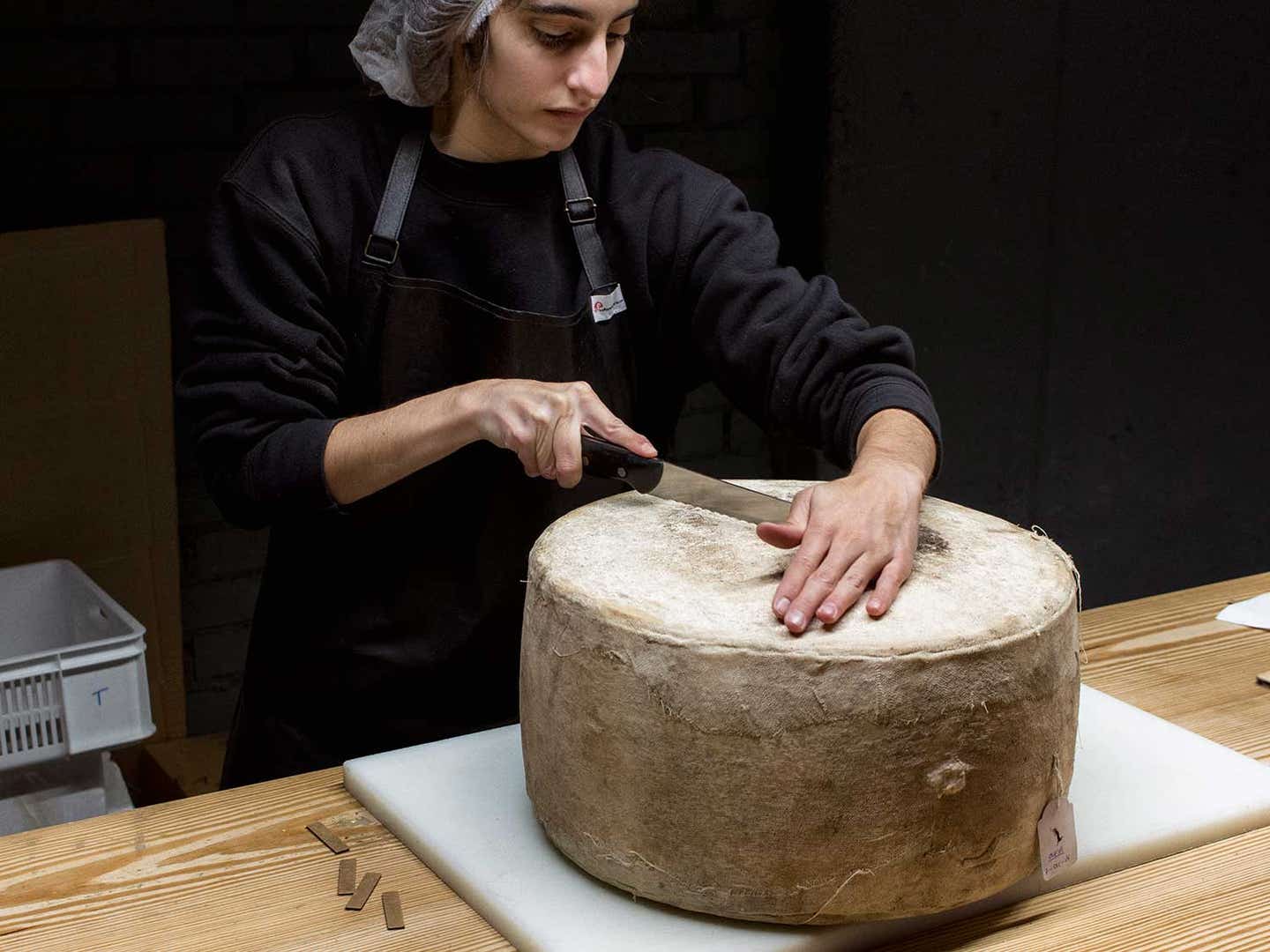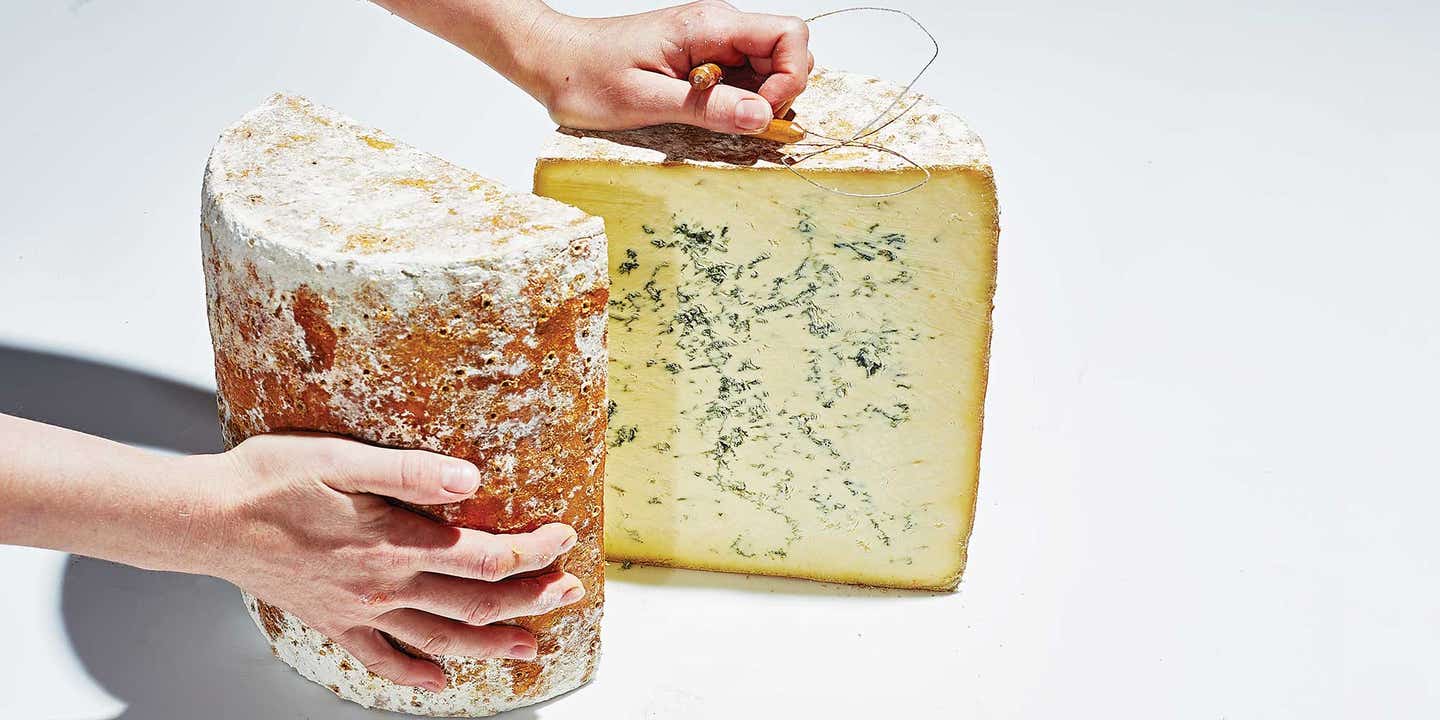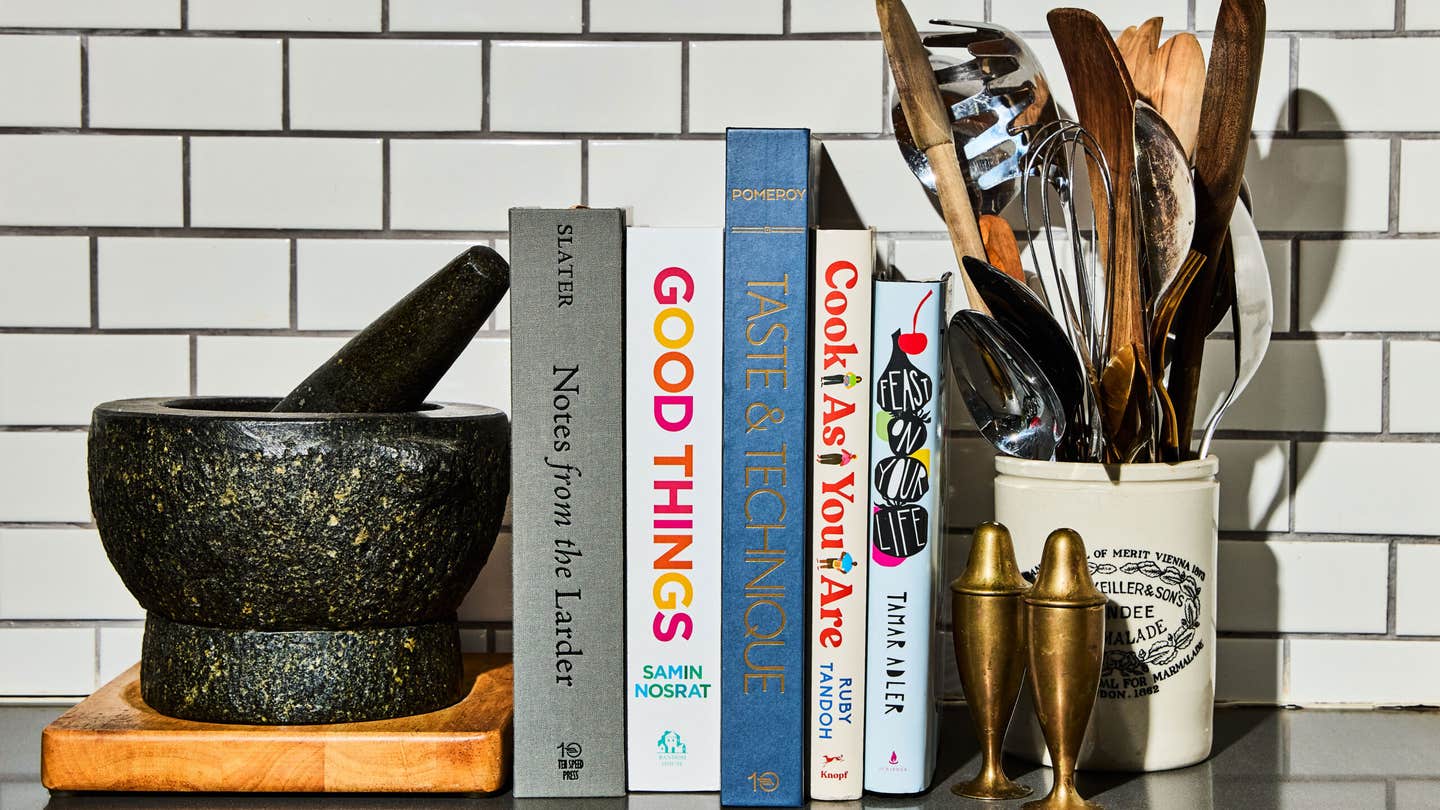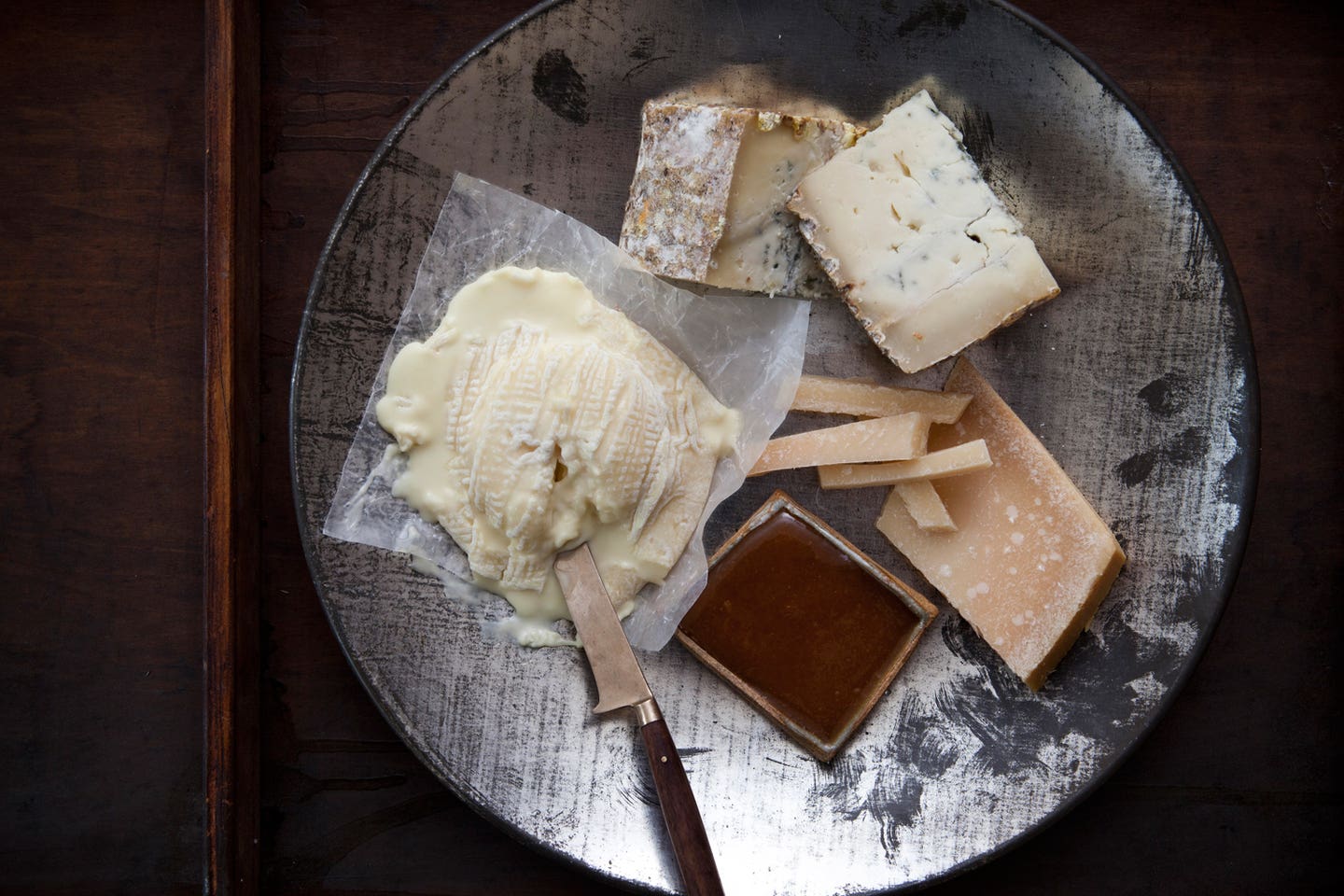
Unlocking Your Inner Cheesemonger With Adam Moskowitz
Everything you need to know to eat cheese like the pros
The first thing that Adam Moskowitz gives you when you walk into his Long Island City cheese warehouse isn't a block of Pecorino Romano or a taste of the best Gruyére you can find this side of the Alps—it's a hug.
“You ready to talk cheese, or what?”
It's hard not to like the guy behind the Cheesemonger Invitational, Larkin Cold Storage, and Columbia Cheese. The latter two are his Long Island City, Queens-based importing businesses; Moskowitz sources and ships some of Europe's finest and rarest cheeses to shops, cheesemongers, and restaurants all over the U.S.
The Cheesemonger Invitational, however, might be what Moskowitz is best known for. The international tournament of "turophiles" (cheese scholars) pits 46 cheesemongers against each other through nine rounds of competition that test the technical skills, cheese knowledge, and salesmanship of each competitor. According to the event website, you haven't lived until "you've cheered at the top of your lungs (with a mouth full of brie) for someone to cut a perfect quarter pound of cheddar on a stage in front of hundreds of like minded weirdos."
Did I mention that Moskowitz, who moonlights as a rapper and DJ, conducts his duties as CMI Master of Ceremonies in a full-body cow costume? Again, it's hard not to like the guy.
On a cold day, the inside of Moskowitz’s cavernous refrigerated warehouse offers little reprieve. The importer's short, dark hair is tucked into a knit beanie that’s pulled down just above his big, intense eyes. He speaks quickly, which can make some of what he says a little hard to follow, but if you pay attention, you’ll realize you’re speaking to a cheese genius.
Easy-going and inviting, in spite of absurdly vast industry knowledge (he’s a third-generation cheese importer), Moskowitz doesn’t talk down to the uninitiated. “There’s a lot of food fear out there,” the 44-year-old explains. “People get nervous talking about cheese in front of me because they think I’m going to judge them or something. I want to put an end to that fear.” In order to do that, he encourages everyone to fall in love with cheese.
Everyone's quest for cheese mastery is different, but the journey starts with passion and, most importantly, by figuring out what makes cheese special for you. And since most folks can't spend a day with one of the East Coast's foremost cheese experts, we asked Moskowitz to break down a few key steps to help you access your own inner cheesemonger.
Okay, so you've developed a mild addiction to cheese —well done, you're halfway there.
The next step, Moskowitz says, is finding and, ideally, befriending a local cheesemonger. "It's similar to the relationship you might have with your butcher or your wine or beer merchant," he explains. "Go to retail locations that have cut-to-order cheese shops and start building relationships with the people behind the counter. A great cheesemonger will calibrate to you and figure out where you are in your turophile status, like a somm."
The people who understand milk composition, the chemistry behind different kinds of cheeses, and how the milk-producing animals were treated during production—all factors that affect the taste, texture, aroma, and appearance of a cheese—are often delighted to share that knowledge with a fellow cheese-lover.
Don’t be afraid of any cheese.
Learn to love blue cheese by starting with creamy, buttery varieties, like Colston Bassett Stilton
According to Moskowitz, fear is the biggest obstacle for people who are just embarking on their cheese journey.
Moskowitz explains that "there's no turophile that says 'Oh I hate blue cheese.' Turophiles say 'I don't really like blue cheese, so I'm going to educate myself on blue cheese and fall in love with it. I'm going to teach myself to love this cheese'."
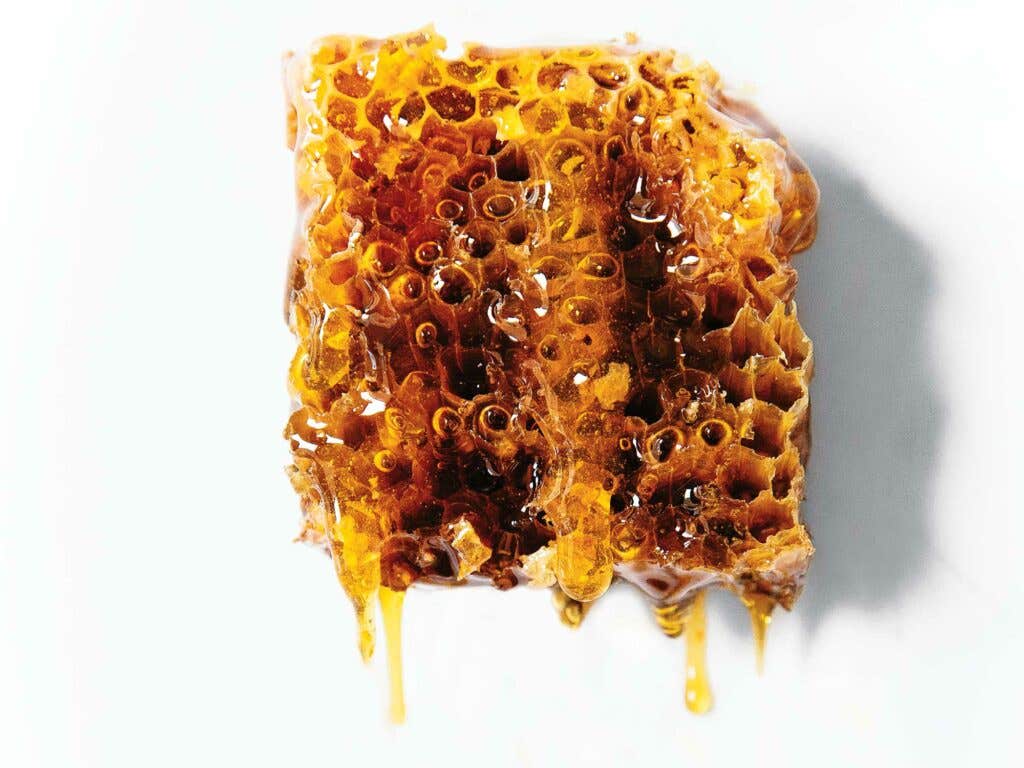
If you do come across a cheese that you don’t immediately love, he recommends starting with more mellow versions from the same category. If you’re unsure of blue cheese, start with a creamy, mild blue, such as gorgonzola dolce. Maybe taste it with a little honey or fruit preserves on it—a trick Moskowitz says makes the medicine go down a little easier, as sugar balances the salty bite.
Another factor that might espouse some cheese fear is the smell. To put it bluntly, a lot of great cheese stinks. This might be off-putting at first, but if you push through the initial olfactory shock, you’ll learn to love the unique aromas that accompany some of the world’s most compelling cheeses.
Take notes and talk about cheese.
Coming up with your own vocabulary of descriptors is essential for educating your palate. Once you start writing down what you like, Moskowitz explains, it becomes easy to find cheeses you'll love in the same family. However, he warns against falling into descriptor traps—in other words, letting people tell you what something should taste like, rather than deciding for yourself.
"Everyone describes cheese as 'creamy,'" he says. "But you have to go beyond that. When someone asks what a cheese tastes like, that's easy—taste is simple. It's sweet, sour, salty, bitter, umami. You want to know what's hard? Understanding aroma." Smell is the only sense that solely triggers your limbic system, Moskowitz suggests. "That's where your memories are. That's why you can smell something and have a vivid memory of a scene from 20 years ago."
The trick to understanding aroma? Be relaxed, Moskowitz says. “Maybe even close your eyes. Really try to connect with your memories. If something smells tropical but you can’t really place it, I challenge people to go to the memory,” he explains. “You’re on vacation, you’re on a beach, you’re at the bar. What drink did you just order? Was it a pina colada? Because that’s pineapple. Boom. That’s how you tap into aroma.”
This selection of cheeses has it all: You’ve got the whole spectrum of textures, milk types, and flavors represented. Blu di Bufala (top left) is a decadent stinky cheese from an ancient recipe. A really top notch, salty hard cheese like Solo di Bruna Parmigiano Reggiano, aged for over 24 months to achieve the perfect nutty, caramelized crunch, is almost better for munching off a cheese plate than it is for grating. Vermont Butter and Cheese Company’s Cremont (left), a combination of goat and cow’s milk and cream, has a delicate bloomy rind and soft, luscious interior. Miel Asturiana Chestnut Honey is a dark, thick, luxurious accompaniment to any cheese, but don’t be surprised to catch your guests enjoying it alone, by the spoonful. Clockwise from top:
Blu di Bufala, _$27.99/lb at Murrayscheese.com_
Solo Di Brunda Parmigiano-Reggiano, _$22.99/lb at Murrayscheese.com_
Miel Asturiana Chestnut Honey, _$22.30 at Tienda.com_
Vermont Butter & Cheese Co. Cremont, _$10.99 each at Murrayscheese.com_
Home cheese care is possibly the most neglected aspect of cheese appreciation—something Moskowitz wants to fix. “Don’t buy big chunks of cheese,” Moskowitz says. He recommends buying a smaller portions, whenever possible cut to order, and eating it within 24 hours, and warns about the problems that arise when cheese is wrapped in plastic.
The issue with plastic wrap is that cheese absorbs unpleasant flavors, both from the film itself and from unwanted bacteria that forms between cheese and nonporous wrapping.
The best way to get rid of that plasticky flavor, Moskowitz says, is to “face” any cheese that has been stored in plastic—in other words, use a long, sharp knife to scrape a thin layer from from the surface, discarding the parts which may have absorbed any off-flavors.
“Tupperware or paper is a better option for storing cheese,” he says; when you leave the cheese in a tupperware by itself, “you’re actually putting the cheese in its own microclimate and letting it breathe.”
Pairing your cheese.
Moskowitz doesn’t mince words about proper cheese and beverage pairings. When you eat cheese, essentially, you’re eating fat,” Moskowitz explains, “so you want something that scratches the fat off of your tongue and your palate,”
The best way to achieve that? With bubbles.
If you’re looking to let the flavor of the cheese shine on its own, try tasting it with seltzer. Otherwise, Moskowitz notes, sparkling wine is the move. “Champagne all the way,” he says, “Or if you get a sparkling riesling—holy cow.”
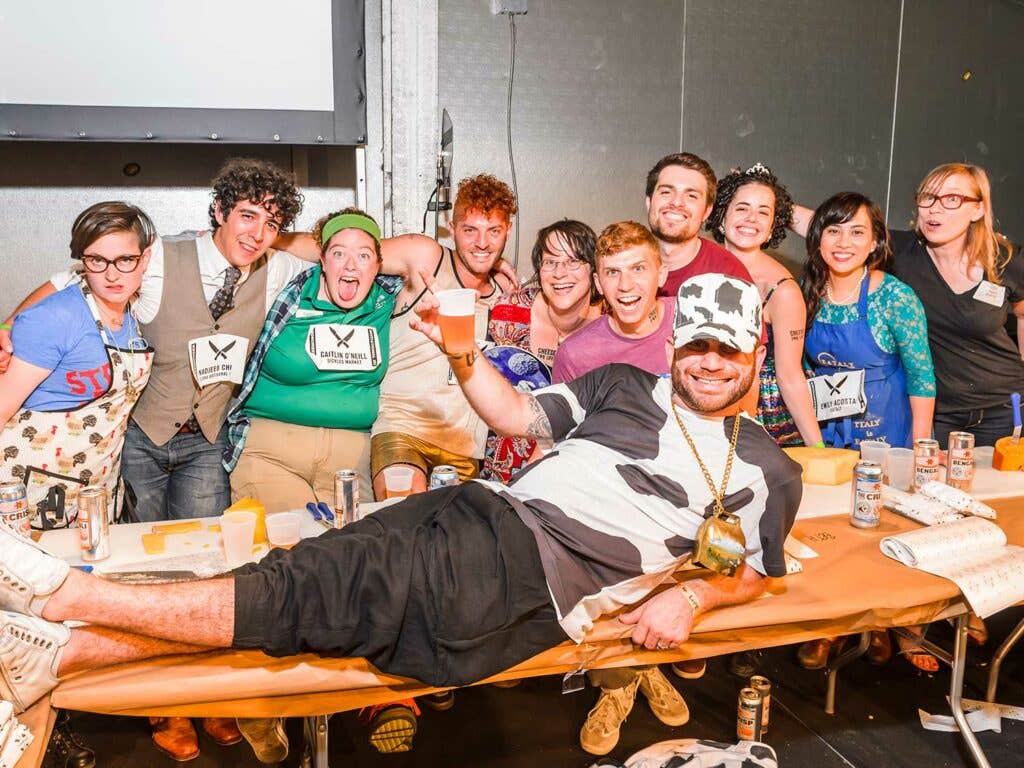
Beer—particularly stouts and other malty, toasty styles—is also a great beverage to pair with cheese, Moskowitz tells us, since the grain in the beer acts as a palate cleanser, taking the place of, say, crackers or bread. “Some might argue that beer is a better pairing than wine, since with wine you need bread to balance everything out. Beer is perfect since the bread is included.”
Don't be a Snob
If you're getting the impression that only the rarest, most exquisite cheeses are worth your time, don't panic—lots of people share that misconception. The idea that mass-produced cheeses, or "industrial cheeses," aren't enjoyable or valuable is a bit elitist. Just because a cheese is produced in large quantities doesn't mean it's inherently inferior to a cheese made by hand on a small farm. The same is true for artisan cheeses. Don't be duped into thinking that artisanal, hand-molded cheeses are only for the select few, or that you have to be a seasoned turophile to enjoy them. Cheese, Moskowitz reminds us, is for everyone to enjoy.
"It's not all about how fancy or rare your cheese is," he says. "When I'm having a burger, the perfect cheese to go on there is an American single—I mean, it's designed for that specific purpose. And people's love of cheese starts with their earliest memories. For some that might be Velveeta. I don't begrudge industrial cheese, I just don't work in it."
But that isn’t to say that Moskowitz doesn’t love hard-to-find, artisan cheeses. In fact, his favorite cheeses come from remote mountains in Europe, where he’s cultivated personal relationships with farmers and producers alike, and exports their cheeses to his Long Island City warehouse. “When you’re eating expensive cheese,” he explains, “it’s not a bougie thing. It’s supporting a massive group of agrarian communities working the land. And that’s what’s important.” Supporting the local farmers is what makes the cheese expensive. At the end of the day, it’s all about the cheese and the people who produce it, he explains.
And as you walk out of the unassuming facade of his warehouse, he pauses, looks directly into your eyes, and says quietly, “It’s the cheese. The cheese is bigger than all of us.”
Keep Reading
Continue to Next Story
